16th century Spanish explorer Juan Ponce de León looked and looked but never did find the Fountain of Youth, a spring rumored to restore one’s youth if you bathed or drank from its waters. If he had, I might have interviewed him for this story.
Sunday night, another symbol of youth beckons skywatchers the world over. A fresh-faced, day-young crescent Moon will hang in the western sky in the company of the planets Mars and Mercury. While I can’t promise a wrinkle-free life, sighting it may send a tingle down your spine reminding you of why you fell in love with astronomy in the first place.
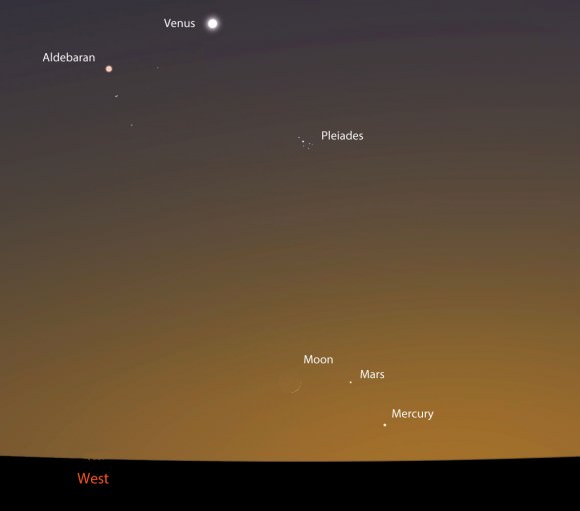
The Moon reaches New Moon phase on Saturday, April 18 during the early afternoon for North and South America. By sunset Sunday, the fragile crescent will be about 29 hours old as seen from the East Coast, 30 for the Midwest, 31 for the mountain states and 32 hours for the West Coast. Depending on where you live, the Moon will hover some 5-7° (three fingers held at arm’s length) above the northwestern horizon 40 minutes after sunset. To make sure you see it, find a location with a wide-open view to the west-northwest.
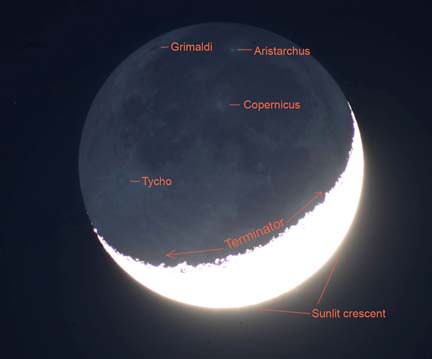
While the crescent is illuminated by direct sunlight, you’ll also see the full outline of the Moon thanks to earthshine. Sunlight reflected off Earth’s globe faintly illuminates the portion of the Moon not lit by the Sun. Because it’s twice-reflected, the light looks more like twilight. Ghostly. Binoculars will help you see it best.
Now that you’ve found the dainty crescent, slide your eyes (or binoculars) to the right. That pinpoint of light just a few degrees away is Mars, a planet that’s lingered in the evening sky longer than you’ve promised to clean out the garage. The Red Planet shone brightly at opposition last April but has since faded and will soon be in conjunction with the Sun. Look for it to return bigger and brighter next May when it’s once again at opposition.
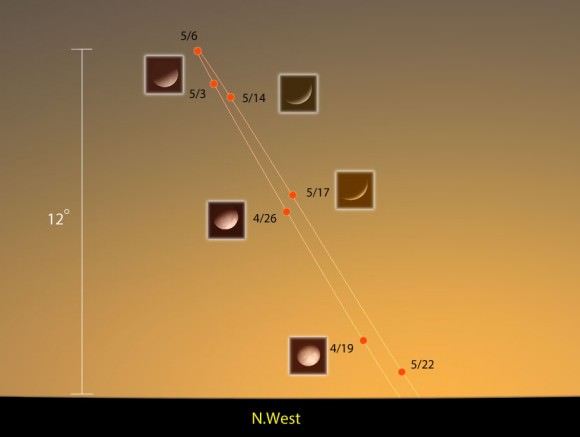
To complete the challenge, you’ll have to look even lower in the west to spot Mercury. Although brighter than Vega, it’s only 3° high 40 minutes after sunset Sunday. Its low altitude makes it Mercury is only just returning to the evening sky in what will become its best appearance at dusk for northern hemisphere skywatchers in 2015.
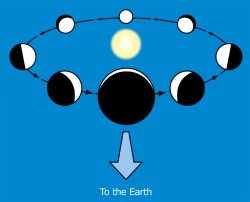
Right now, because of altitude, the planet’s a test of your sky and observing chops, but let the Moon be your guide on Sunday and you might be surprised. In the next couple weeks, Mercury vaults from the horizon, becoming easier and easier to see. Greatest elongation east of the Sun occurs on the evening of May 6. Although the planet will be highest at dusk on that date, it will have faded from magnitude -0.5 to +1.2. By the time it leaves the scene in late May, it will become very tricky to spot at magnitude +3.5.
Mercury’s a bit different from Venus, which is brighter in its crescent phase and faintest at “full”. Mercury’s considerably smaller than Venus and farther from the Earth, causing it to appear brightest around full phase and faintest when a crescent, even though both planets are largest and closest to us when seen as crescents.
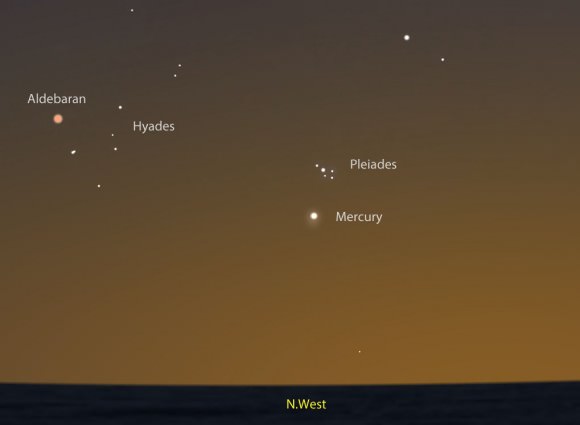
Venus makes up for its dwindling girth by its size and close proximity to Earth. It also doesn’t hurt that it’s covered in highly reflective clouds. Venus reflects about 70% of the light it receives from the Sun; Mercury’s a dark world and gives back just 7%. That’s dingier than the asphalt-toned Moon!
Good luck in your mercurial quest. We’d love to hear your personal stories of the hunt — just click on Comments.

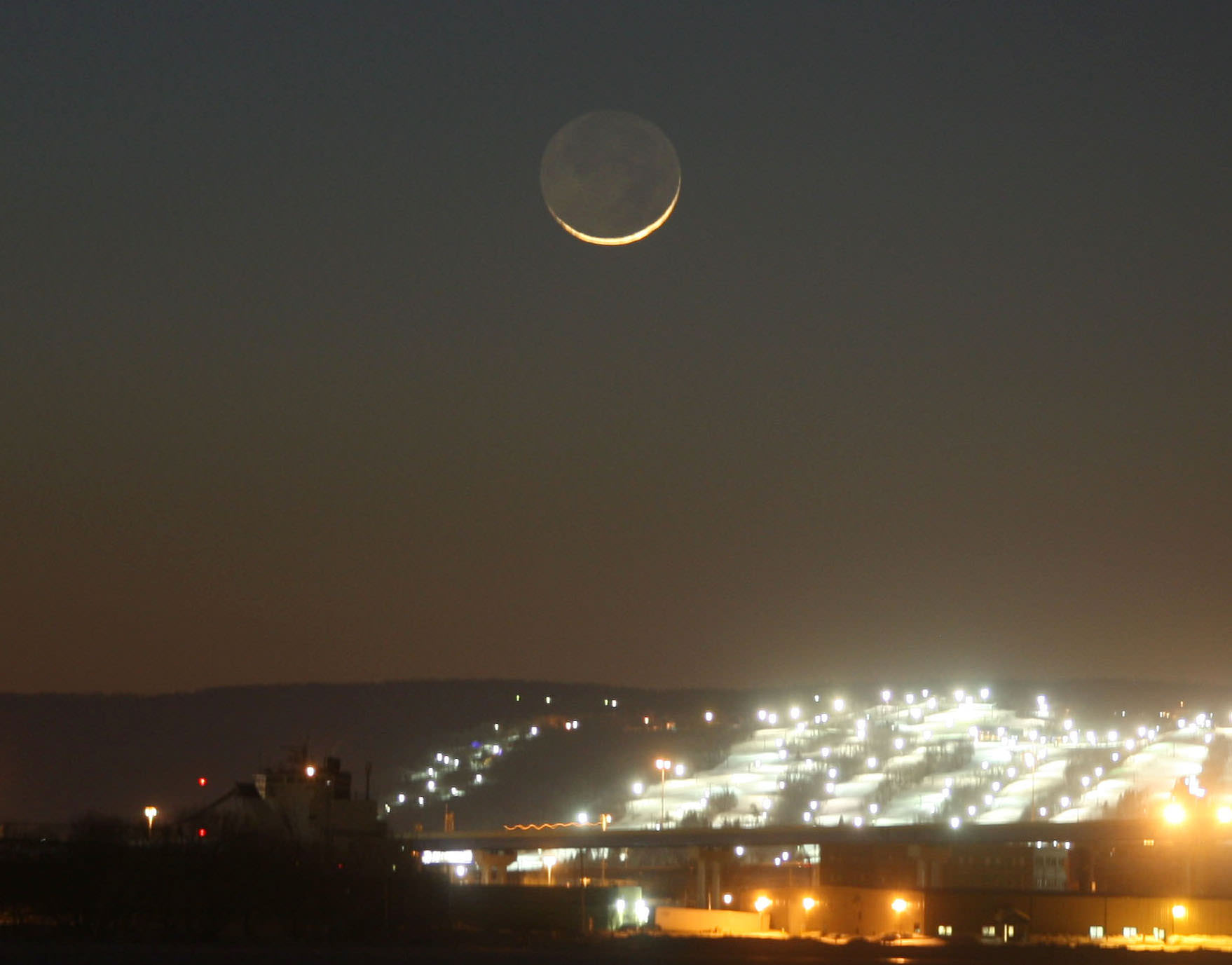
Fantastic! Bob the crescent Moon over Deluth is truly out of this World this is one of your best, outstanding job and so well done. it is obvious you love what you do, regards, Ben Crane
Hi UFOs,
Thank you for your kind words on the photo. We’re lucky to have a few spots where you can get down low near the horizon otherwise trees everywhere!
Thanks for the sky report. Note to self: Move out of canyon to get a view of the horizon.
Un-for-tuna-nettly, my sky consists of holes in a redwood forest canopy. This is the main reason I mounted my new 12 1/2″ scope on wheels! Although I frequently have to move the scope to get a view, I’ve been successfully exploring springtime galaxies and clusters and have been getting practice using my set up. I have also been monitoring the dark part of the moon – looking for meteor impact flashes. I tested a web cam at the eyepiece recently and found the sensor FAR too small for my OTA. Still it was interesting to see a single R/W needle on a tree on a ridge line a half mile away!
Aqua4U,
I understand the horizon problem. As I mentioned in the earlier comment, trees here make it very difficult to get down to those low declinations. I often will drive somewhere to a spot that may have terrible views otherwise but offer a perfect southern or western horizon.
It is quite obvious that to get Great Pictures like this you have to travel and work so hard its a Labour of Love and I have great Respect for the effort you Guys put into this effort Thanks again.